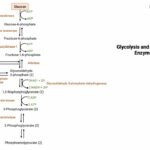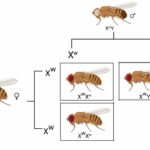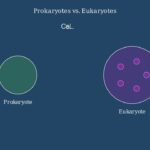Sourav Pan
Transcript
What is motility in biology?
At its core, motility is the fundamental capacity for autonomous movement in biological organisms.
Motility is defined as the ability of organisms or cells to move independently using metabolic energy.
Motility differs from passive movement in several key ways.
Active motility requires metabolic energy and is self-directed and purposeful.
In contrast, passive movement relies on external forces, requires no energy expenditure, and lacks directional control.
Motility operates across multiple biological scales.
At the cellular level, motility includes movements of individual cells using structures like flagella or cilia.
At the organism level, motility involves coordinated movements of muscles and appendages.
And at the population level, motility can involve migration patterns and collective movement behaviors.
Understanding motility is crucial to biology for several reasons.
Motility allows organisms to acquire essential resources like food, water, and nutrients.
It enables creatures to escape predators and other threats.
Motility is essential for finding mates and successful reproduction.
It allows species to explore and colonize new environments.
And at the cellular level, motility is critical for immune responses and developmental processes.
As we conclude our introduction to biological motility, let’s review the key concepts.
Motility is autonomous movement powered by metabolic energy, distinct from passive movement that relies on external forces.
It functions across multiple biological scales and is essential for survival, reproduction, and cellular functions.
Flagellar motility is a remarkable form of cellular propulsion that allows microscopic organisms to move through fluid environments.
Flagella are whip-like structures that extend from the cell body. There are two distinct types: the complex eukaryotic flagellum and the simpler prokaryotic flagellum.
Eukaryotic flagella, found in human sperm cells, contain a complex arrangement of microtubules. Prokaryotic flagella, seen in bacteria like E. coli, consist of a rotary motor at the base connected to a rigid filament.
The movement mechanism differs dramatically between the two types of flagella.
Eukaryotic flagella create a wave-like motion through the sliding of internal microtubules powered by motor proteins called dyneins.
In contrast, prokaryotic flagella operate like a tiny rotary motor, spinning the rigid filament to create a corkscrew motion that propels the bacterium forward.
Let’s see flagellar motility in action with two key examples. First, human sperm cells use their single, powerful flagellum to swim toward the egg.
Sperm navigate by detecting chemical gradients released by the egg, a process called chemotaxis. Their flagellum creates a powerful, asymmetric wave that propels them through the female reproductive tract.
Bacteria like E. coli use multiple flagella that can rotate in coordination to achieve directed movement.
Bacteria move using a ‘run and tumble’ strategy. During runs, flagella rotate counterclockwise in synchrony, pushing the cell forward. When flagella rotate clockwise, they cause the bacterium to tumble and change direction.
Let’s examine the remarkable precision and efficiency of these microscopic propulsion systems.
Despite their tiny size, flagellated cells achieve impressive speeds. Sperm can travel about five body lengths per second, while bacteria can move at speeds of up to ten body lengths per second.
Even more remarkable is their navigation precision. Bacteria can detect chemical concentration changes of less than one percent, allowing them to efficiently navigate toward nutrients or away from toxins.
Flagellar motility demonstrates nature’s ability to create efficient, precise propulsion systems at the microscopic scale, enabling cells to navigate their environments with remarkable effectiveness.
Motility plays a crucial role in both survival and reproductive success across the animal kingdom.
Predator-prey interactions often come down to a contest of speed and agility. The ability to move faster or change direction more efficiently can mean the difference between life and death.
For example, cheetahs can reach speeds of up to one hundred kilometers per hour to catch gazelles. Meanwhile, prey species have evolved erratic movement patterns that make them harder to predict and catch.
Migration requires incredibly efficient movement over vast distances. Animals travel thousands of kilometers to access seasonal resources and breeding grounds.
Arctic terns hold the record for the longest migration, flying seventy-one thousand kilometers annually between the Arctic and Antarctic. Gray whales travel twenty-two thousand kilometers between feeding grounds and breeding areas.
Reproductive success often depends directly on mobility. In many species, sperm cells must swim efficiently to reach and fertilize eggs.
Sperm competition is fierce, with the most motile cells having the best chance of success. The fastest and most efficient swimmers typically fertilize the egg.
Plant reproduction also depends on mobility, but often through relationships with pollinators. Bees and other insects transport pollen between flowers, enabling reproduction.
Movement requires a significant energy investment. Different forms of motility have varying energy costs.
Flying is typically the most energy-intensive form of movement, followed by running and swimming. Walking is generally more efficient.
For motility to evolve and persist, its benefits must outweigh its costs. The energy invested must provide proportional advantages in survival or reproduction.
Throughout evolutionary history, selective pressures have shaped diverse motility mechanisms to maximize both survival and reproductive success.








